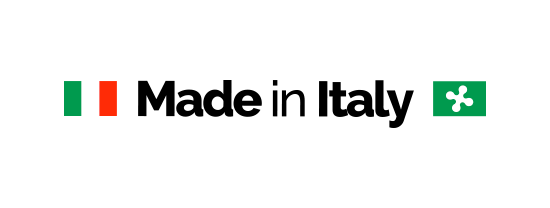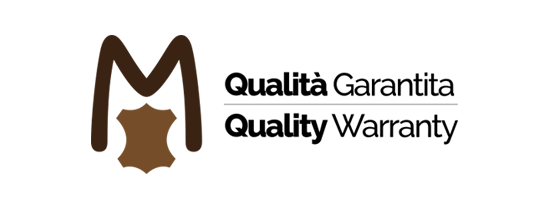Leather glossary
La pelle è una materiale naturale conosciuto da tutti. Ci sono però alcuni termini meno comuni utili da conoscere per apprezzare ancora di più questo fantastico materiale, prodotto secondario dell’industria alimentare.
1. Aniline Leather
High-quality bovine leather that retains its natural surface. This type of leather preserves softness, transparency, and tactile qualities.
2. Semi-Aniline Leather
Similar to aniline leather, but with a light layer of transparent coating to provide greater protection without excessively compromising the naturalness of the leather.
3. Full Grain Leather
The outermost part of the leather, which retains the natural grain and surface characteristics. It is considered high quality and can be used for luxury products.
4. Top Grain Leather
The top portion of the leather that has been lightly sanded and finished to remove imperfections. It retains a good portion of the natural grain and is often used for high-end furnishings.
5. Split Leather
The bottom part of the leather separated from the top grain. Less expensive and often used in less prestigious products. Maxpell does not sell splits.
6. Natural Grain
The natural pattern or texture of bovine leather, which can vary from animal to animal and within the same hide.
7. Finish
Treatments applied to leather to improve its appearance, durability, and resistance. Finishes can be matte, glossy, or transparent.
8. Regenerated Leather
Also known as synthetic leather or faux leather (short for "cheap leather", not "eco-friendly leather") is a material that mimics the appearance of cowhide but is artificially produced. In addition to polluting more than real cowhide, it does not have the same characteristics as leather, a hypoallergenic and breathable material. Faux leather is also less durable. In addition, Legislative Decree No. 68 of 2020 establishes the express prohibition of the use of the words leather and cuoio, even as prefixes or suffixes, to identify materials not derived from animals, as is currently the case with the unorthodox terms eco-leather, vegan leather and the like used for synthetic materials. This is not to mislead the consumer who, believing he is buying leather, buys plastic instead.
9. Pull-up Leather
Leather that changes color when stretched or bent, creating unique effects on the surface.
10. Nubuck
Leather subjected to a sanding process to obtain a velvety surface. It is one of the most refined types of leather.
11. Tanning
The process of treating raw hides to make them suitable for use. This process includes cleaning, treatment with chemicals, and finishing to produce leather ready for further processing.
12. Drum Dyeing
A method of dyeing leather that involves immersing the hides in large drums containing dyes. This process can be used to achieve uniform and deep dyeing.
13. Chrome Tanning
A tanning method that uses trivalent chromium salts as tanning agents. This process is fast and efficient, producing soft, flexible, and light- and moisture-resistant leathers. Most industrially produced leather is chrome-tanned.
Chromium is contained in various foods, especially in whole grains and meat, as well as in some fruits such as apples, oranges and bananas, and in vegetables such as broccoli and snow peas.
Chromium increases the effectiveness of insulin and is a constituent of glucose tolerance factor.
14. Vegetable Tanning
A tanning method that uses tannins as tanning agents. Tannins are polyphenolic compounds found in the barks of plants such as oak, chestnut, spruce, and acacia. They act by forming chemical bonds with the proteins in the leather, particularly collagen, making the product rot-resistant.
15. Mixed Tanning
A tanning method that uses trivalent chromium salts as tanning agents. This process is fast and efficient, producing soft, flexible, and light- and moisture-resistant leathers. Most industrially produced leather is chrome-tanned.
Chromium is contained in various foods, especially in whole grains and meat, as well as in some fruits such as apples, oranges and bananas, and in vegetables such as broccoli and snow peas.
Chromium increases the effectiveness of insulin and is a constituent of glucose tolerance factor.




